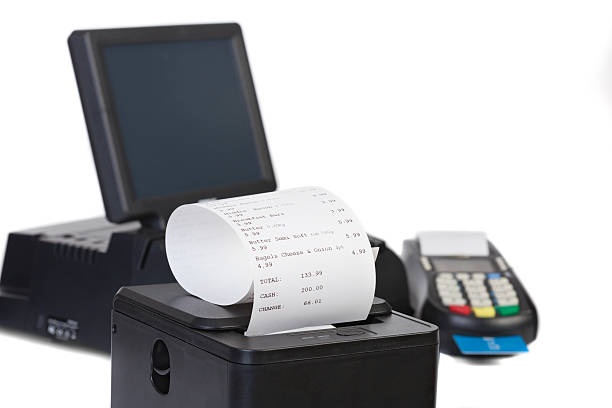Choosing the right POS printer is a critical decision for any business, particularly those operating in fast-paced environments where efficiency and accuracy are essential. Whether you’re running a retail store, a restaurant, or a logistics hub, the performance of your POS printer can significantly affect customer satisfaction and operational flow. In this article, we explore how to evaluate POS printers by examining three key factors: print speed, resolution, and reliability. Understanding these components will help you make an informed choice when working with a POS printer supplier and ensure your business operations remain smooth and efficient.
Why the Right POS Printer Matters
POS printers are more than just hardware accessories; they are integral parts of the customer service experience. From printing receipts and tickets to order slips and labels, the printer’s performance impacts both the customer’s perception and the staff’s ability to process transactions quickly. A slow, unreliable, or low-resolution printer can cause delays, misprints, or even system breakdowns during peak hours. That’s why working with a trusted POS printer supplier who understands your business requirements is essential to finding the most suitable solution.
The Role of Print Speed in POS Operations
Print speed refers to how quickly a printer can produce receipts, labels, or tickets. It’s typically measured in millimeters per second (mm/s) or lines per second (lps). For high-volume businesses, even a few seconds saved per transaction can add up significantly over time. Print speed becomes particularly important in environments like fast-food restaurants or grocery stores where rapid customer turnover is expected. A printer that delays by even two seconds per transaction could slow down an entire queue. Choosing a POS printer with high-speed capabilities reduces wait times, increases customer satisfaction, and optimizes employee productivity.
Factors Affecting Print Speed
Print speed is influenced by several internal and external factors. Internally, the printer’s thermal mechanism or print engine plays a key role. Some printers are built for high-speed printing by default, using direct thermal technology to maximize output. Externally, the type of data being printed simple text vs. graphics or QR codes also affects speed. More complex layouts may slow down the printing process, even on high-speed devices. Connectivity can further influence print speed. For instance, printers using a stable USB or Ethernet connection typically operate faster than those on slower or congested Wi-Fi networks. When choosing a POS printer supplier, ensure they provide detailed specifications and can advise on real-world print speed performance based on your environment.
Understanding Print Resolution and Its Importance
Print resolution is a measure of the clarity and detail a printer can deliver, typically expressed in dots per inch (DPI). For most POS printing applications, a resolution of 203 DPI is standard and sufficient for producing readable receipts and barcodes. However, certain business models, such as boutique retailers or branded cafes, may benefit from higher resolution to produce logo-rich receipts or promotional graphics.
Resolution vs. Speed: Finding a Balance
Higher resolution printing often comes at the cost of reduced speed. This trade-off must be considered carefully, especially in high-traffic scenarios. A POS printer supplier should be able to recommend printers that balance resolution and speed effectively. For instance, a mid-range printer offering 203 DPI and 300 mm/s speed may serve most use cases better than a high-resolution model that operates slowly.
Barcode and QR Code Clarity
Accurate barcode and QR code printing is crucial for inventory management, customer checkouts, and mobile app integrations. Blurred or unreadable codes can lead to scanning errors, delays, and frustration. Resolution, in this context, directly affects scanning accuracy. Businesses relying heavily on barcode systems should prioritize POS printers with proven performance in code clarity.
Evaluating Reliability in POS Printers
Reliability is the backbone of a successful POS system. A printer that frequently jams, overheats, or needs maintenance can interrupt operations and result in lost revenue. Reliability should be evaluated by considering the printer’s lifespan, build quality, maintenance requirements, and failure rates.
Printer Lifespan and Durability Metrics
Manufacturers often publish durability ratings such as mean cycles between failure (MCBF) or printhead lifespan (measured in kilometers of printed paper). These metrics offer insight into how long the printer is expected to last under regular use. When selecting a POS printer supplier, it’s essential to look for these specifications and compare them across models.
Environmental Compatibility
Reliability also depends on how well the printer performs in your specific business environment. For example, a printer in a hot, greasy kitchen needs to withstand heat and spills, while one in a warehouse must resist dust and handle impacts. Some models are designed with rugged casings or moisture-resistant components, specifically for such conditions. A knowledgeable POS printer supplier will help match you with equipment tailored for your work environment.
Ease of Maintenance
A reliable printer should also be easy to maintain. Features like drop-in paper loading, auto-cutter life expectancy, error detection sensors, and self-cleaning mechanisms can significantly reduce downtime. When evaluating options, assess how easily routine tasks can be performed by staff without specialized training.
Connectivity and Integration Capabilities
Beyond speed, resolution, and reliability, a POS printer’s ability to integrate seamlessly into your existing ecosystem is essential. Most modern printers support USB, Ethernet, Bluetooth, or Wi-Fi connectivity, with some offering multiple options in a single model. This flexibility allows businesses to scale, rearrange layouts, or transition to mobile/tablet-based POS systems. An experienced POS printer supplier can guide you through the technical requirements and ensure driver or software compatibility with your POS software, whether cloud-based or locally installed.
Platform Compatibility
Not all POS printers work out-of-the-box with every system. Compatibility with Windows, iOS, Android, or Linux is a critical consideration, especially for businesses using customized platforms or mobile POS solutions. Always confirm with your POS printer supplier whether the model you choose is compatible with your current or future operating environment.
Cloud and Mobile Printing
Many businesses are moving toward cloud-based POS systems. As a result, cloud printing capabilities are becoming increasingly important. POS printers that support cloud-based platforms enable remote management, software updates, and multi-location synchronization. This is particularly valuable for franchises or multi-branch retailers. A POS printer supplier familiar with cloud printing can ensure your device stays future-proof and compliant with evolving technology trends.
Energy Efficiency and Cost Considerations
While performance and durability are top priorities, operational costs and energy consumption should also be evaluated. Printers with Energy Star certification or eco-friendly modes can help reduce electricity usage. Thermal printers that support variable-length printing can also help conserve paper. Discussing these factors with your POS printer supplier can help identify long-term savings opportunities and sustainability benefits.
Consumable Compatibility
Some POS printers are compatible only with proprietary paper rolls or accessories, which can lead to higher ongoing costs. Others accept standard-sized thermal paper rolls, allowing you to shop around for supplies. A cost-efficient and honest POS printer supplier will offer transparency about consumables and potential hidden costs.
FAQs
How fast should a POS printer be for a busy retail environment?
A print speed of at least 250 mm/second is ideal for high-traffic environments. For exceptionally busy operations, models offering speeds above 300 mm/second help reduce bottlenecks.
Is higher resolution always better for receipt printers?
Not necessarily. A resolution of 203 DPI is sufficient for most businesses. Higher resolution is only necessary for those needing detailed logos, graphics, or sharp barcode printing.
How do I know if a POS printer is reliable?
Check metrics like MCBF (mean cycles between failures), printhead life (in km), and user reviews. A trusted POS printer supplier should also provide technical support and warranty details.
What kind of connectivity should I prioritize?
USB and Ethernet are reliable for fixed setups, while Bluetooth or Wi-Fi is ideal for mobile or tablet-based POS systems. It’s best to choose a printer that offers multiple connectivity options for flexibility.
Can I use a single printer across multiple devices or terminals?
Yes, many POS printers support shared network configurations. Your POS printer supplier can help set this up correctly, ensuring all connected devices can send print jobs without delay.
Conclusion
Evaluating POS printers requires a holistic approach that goes beyond price tags and brand names. Print speed ensures fast service, resolution affects readability and professionalism, and reliability guarantees consistent performance over time. By working closely with a reputable POS printer supplier, you can identify models that strike the right balance between these core attributes while also fitting your business’s technical and budgetary needs. Whether you manage a bustling retail chain or a cozy café, choosing the right POS printer will help you enhance operations and deliver better customer experiences. For proven durability, advanced technology, and industry expertise, HPRT remains a strong choice in today’s competitive POS landscape.
Author Bio:
Alex Chen is a technology consultant specializing in retail hardware, with deep experience in HPRT’s innovative printing solutions. He helps businesses streamline operations through reliable POS systems. HPRT to learn more and explore high-performance printers designed for your business needs.








